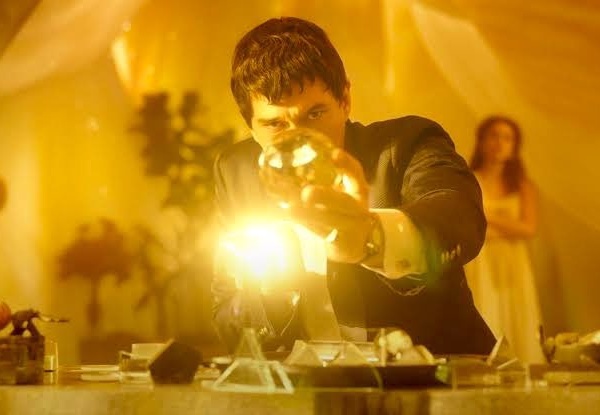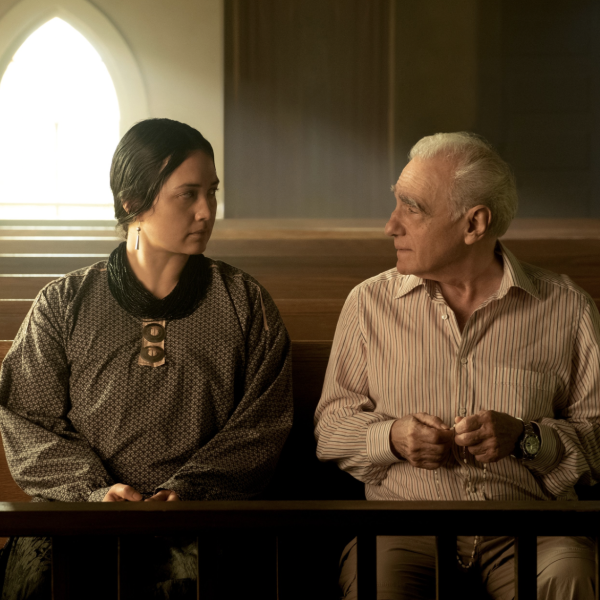
It’s difficult to discuss Ayn Rand and “Atlas Shrugged” without touching on the countless attempts to produce a filmic adaptation of the work, beginning with producer Albert S. Ruddy’s plan in the early ‘70s, which fell apart when Rand insisted on final script approval. From there the highlights include an adaptation by Rand herself, which was unfinished at the time of her death in 1982; passing interest from Clint Eastwood; a TNT miniseries scrapped after the AOL Time Warner merger of the late ‘90s and, perhaps the most interesting attempt of all, a planned two-part adaptation from director Vadim Perelman (“The House of Sand and Fog“) with a cast list rumored to include Julia Roberts, Angelina Jolie, Brad Pitt, Charlize Theron, Russell Crowe and Anne Hathaway.
With producer John Aglialoro’s 18-year option on the rights set to expire on June 15, 2010, a film was finally thrown together and rushed into production last summer. Principal photography began just in the nick of time on June 13, 2010. At the helm was “One Tree Hill” star Paul Johansson, who replaced Stephen Polk just nine days before production began. “Atlas Shrugged: Part I” was filmed in five weeks with a reported budget of $10 million dollars. It stars Taylor Schilling as Dagny Taggart; Grant Bowler as Henry Rearden; Matthew Marsden as James Taggert; Graham Beckel as Ellis Wyatt; Edi Gathegi as Eddie Willers; Jsu Garcia as Francisco d’Anconia and Michael Lerner as Wesley Mouch. The director portrays John Galt in brief, shadowed appearances.

In this slightly modernized take of Rand’s tale, now set in a dystopian 2016 where society is on the verge of collapse and government is growing its control over all industry, Dagny Taggart runs the last remaining railroad company in America, the fledgling Taggart Transcontinental. When a driven industrialist named Hank Rearden develops a new lighter, super strength metal alloy called Rearden Metal, Taggart sees a chance to revive her railroad. She teams with Rearden (first professionally and later personally) to restore the railway while facing roadblocks in every direction — from Taggert’s politically-connected brother James, from economic dictator Wesley Mouch, from the government at large and, to some extent, due to the sudden and mysterious disappearance of society’s greatest minds, who leave behind only the incessantly repeated question, ‘Who is John Galt?’ The story tackles only the first third of Rand’s magnum opus, quite possibly leaving the question eternally unanswered, at least on screen.
While it’s impossible to deny the politically-charged motivations of Rand’s writings and this largely faithful adaptation, reviewing the quality of the film itself has little to do with political leanings. You certainly don’t have to agree with a film’s politics to comment on such things as story, directing and acting. With that said, dismissing the writing of Rand as mere conservative propaganda is indeed an oversimplification of a novelist whose collected works are amongst the most read and influential of the past century. Rand, a noted pro-choice atheist and founder of the Objectivism movement defending the rights of the individual, has been both championed and demonized by conservatives and liberals alike. While her prose isn’t for all tastes and her politics may at once intrigue and appall, the importance of her work within the context of American history is undeniable.
The shame of “Atlas Shrugged: Part I,” irrespective of politics and prose, is that a work so long-discussed has been so blatantly bastardized in the name of a quick buck. Produced at the expense of Rand’s labor of love, the meticulous author herself would surely condemn this paper-thin attempt. Talents greater than this assemblage have struggled and failed to get a hold on the material for a proper adaptation, but here Aglialoro and Co. merely take advantage of timing, delivering a cut-rate travesty of low rent celluloid sure to win back its meager budget (and even draw some defenders) purely on the basis of good timing. Perhaps it will even be enough to propel the unlikely (and unwanted) Part II and III.
“Atlas Shrugged” is a product of Aglialoro’s looming option deadline, pure and simple, rather than any sort of serious attempt at filmmaking. Some have compared the work to that of a TV mini-series, but Atlas doesn’t even broach those levels, as its more daytime soap than network prime time. It’s poorly acted, poorly directed and, all in all, stiff and soulless. You have to feel at least a little bad for the actors, who clearly weren’t receiving an awful lot of guidance from first-timer Johansson, but since the members of the cast all possess some modicum of acting experience, they are not without some share of the blame. 
Schilling is easy on the eyes and relatively watchable as Taggart, though her characterization lacks any real sense of emotional depth. Bowler is shiny and slick with a nice white-toothed smile, but little more. Lerner and Polito are effective in much the same kinds of character parts they always play and, in their case, more power to them so long as the checks cleared.
The budgetary restraints prevent many wowing bits of cinematography — instead we get stock looking landscapes, digitized trains and constant cable news bits — but setting so many scenes around endless mealtime arguments and boardroom discussions don’t exactly propel the sluggish narrative. For those unfamiliar with the story, the constant question of who the heck John Galt is or Taggart’s plan in the latter portion of Part I to name the new rail line after him, make little sense. But making sense of the story or who Galt is are the least of Atlas’ problems, an aimless, amateurish and, more to the point, stone cold boring piece of drivel. [F] — review by Jeff Otto






